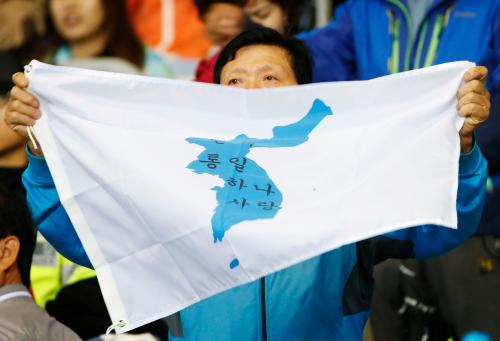Northeast Asia is facing the risk of a “frayed order” due to “heightening adversarial nationalism” and “shifting power trajectories,” writes Brookings Senior Fellow and SK-Korea Foundation Chair in Korea Studies Jonathan Pollack in a new paper. While such concerns might seem apparent in light of North Korea’s nuclear provocations, further analysis suggests that the competing narratives of Japan and South Korea—paired with the rise of China—all inject a level of uncertainty surrounding the future order of Northeast Asia. In his paper, Pollack explores the disruptive factors to regional stability in Northeast Asia, as well as issues confronting U.S. allies in the region and their impacts on long-term U.S. strategic interests.
North Korea
North Korea’s nuclear weapons program has become the “immediate and growing risk to stability and security in Northeast Asia and possibly beyond,” Pollack writes. Ranging from ballistic missile tests to threats of a preemptive nuclear attack, North Korea’s provocations have raised insecurities among U.S. allies about the assurances of an extended deterrence in Northeast Asia.
Pollack does not rule out the possibility of a “longer term maturation of the North’s nuclear and missile capabilities,” and writes that North Korea has essentially “altered the strategic stakes for all regional actors.” At the same time, he adds, the “long-term survival of the North Korean regime cannot be assumed,” and the United States should assess all possibilities and weigh the risks and potential consequences, ideally in close cooperation with South Korea and China.
Regional alliance management
South Korea and Japan, the core alliance relationships in the region, both agree that the United States must “retain its singular role in strategic deterrence.” Yet, Pollack observes that the two allies have been voicing their ambitions and seeking a larger say in their security strategies. Japan, under Prime Minister Shinzo Abe, aims to exercise more sovereignty in its national security policy while assuming a greater security role in Asia and the Pacific. Meanwhile, South Korea has been gaining more autonomy under its joint operational command system and continuously insists on “a diversified deterrence and defense policy” in the face of an immediate nuclear threat.
He argues that what’s troubling are the differences between the two allies on a number of significant issues, particularly their approaches toward China. Japan has been preoccupied with China’s increased capacity for military operations beyond the Chinese mainland, and now officially designates China as a “long-term national security threat” in its Defense White Paper. In contrast, South Korea regards Beijing as an important economic partner and a necessary collaborator in curbing North Korea’s nuclear weapons program.
Another key difference lies in the allies’ views toward Korean unification. The goal of peninsular unification has long been a central policy for the South Korean government since the end of the Korean War, but Pollack asserts that the possibility of unification “generates ample wariness and ambivalence on the part of Japan.” He also notes how the two countries have been unable to fashion a common identity, not only because of the “palpable political and interpersonal distance between the leaders,” but conflicting views in both countries reveal “deep, still contested nationalism within both societies.”
Such divergent approaches suggest two clearly different visions for the region’s future, leading to a less predictable alliance management for the United States. Pollack stresses that “these policy cleavages could directly affect U.S. political, economic, and security relationships across Asia and the Pacific.” Moreover, the United States can no longer expect its allies to defer to U.S. security preferences and must address their ambitions and anxieties.
Though North Korea’s recent actions have “appreciably tempered some of the differences that have impeded closer relations” between Tokyo and Seoul, Pollack recommends that the next U.S. president prioritize a candid discussion among all three leaders, especially with the possibility of a Japanese leadership transition and a new South Korean president in 2018.
China’s rise
Despite clear divergences on political-military issues between the United States and China, Pollack believes “neither country seems intent on a longer-term adversarial relationship” and envisions a relationship based on a combination of “deepening cooperation and managed competition.” However, there’s no guarantee that this will indeed be the case and the future of their relationship will rest on whether their differences can be contained.
The larger challenges in the U.S.-Chinese relationship will be regional and thus, Pollack advises that future U.S. strategy towards China remain mindful of U.S. relationships and policy commitments more broadly. All the while, states in the region are struggling to balance their own relationships between the United States and China in the context of shifting power dynamics.
Seoul’s close relationship with Beijing initially generated some optimism that South Korea can serve as a bridge between the United States and China. But this view has become less certain after Beijing’s harsh backlash against the U.S.-South Korea agreement to deploy a Terminal High Altitude Air Defense (THAAD) in Korean territory.
Prime Minister Abe is very wary of what Pollack calls China’s “heightened nationalistic sentiments” and its actions in contested maritime domains. This has led Japan to expand its defense cooperation with India and Australia and concurrently tethering its policies with the United States in hopes of preventing “any possibility that America’s strategic affiliation with Japan could dissipate.” Nevertheless, the question remains as to whether U.S. policies toward China will comport fully with Japanese expectations and anxieties.
Challenges ahead
The United States has enjoyed policy success in Northeast Asia for many decades, but Pollack warns that it would be “imprudent to assume that extant strategic patterns can continue indefinitely” or to assume that allies will automatically comply with U.S. security interests. There is a need for the United States to carefully consider its future goals for the region and to do this, it must fully understand the forces that animate strategic debate in Japan and South Korea, according to Pollack. From the immediate threat of North Korea to a long-term calculus of U.S.-China relations, the next U.S. administration is confronted with key security challenges in Northeast Asia that can effectively disrupt the future regional order.






Commentary
Debacles in Northeast Asia: What the U.S. should do
September 30, 2016